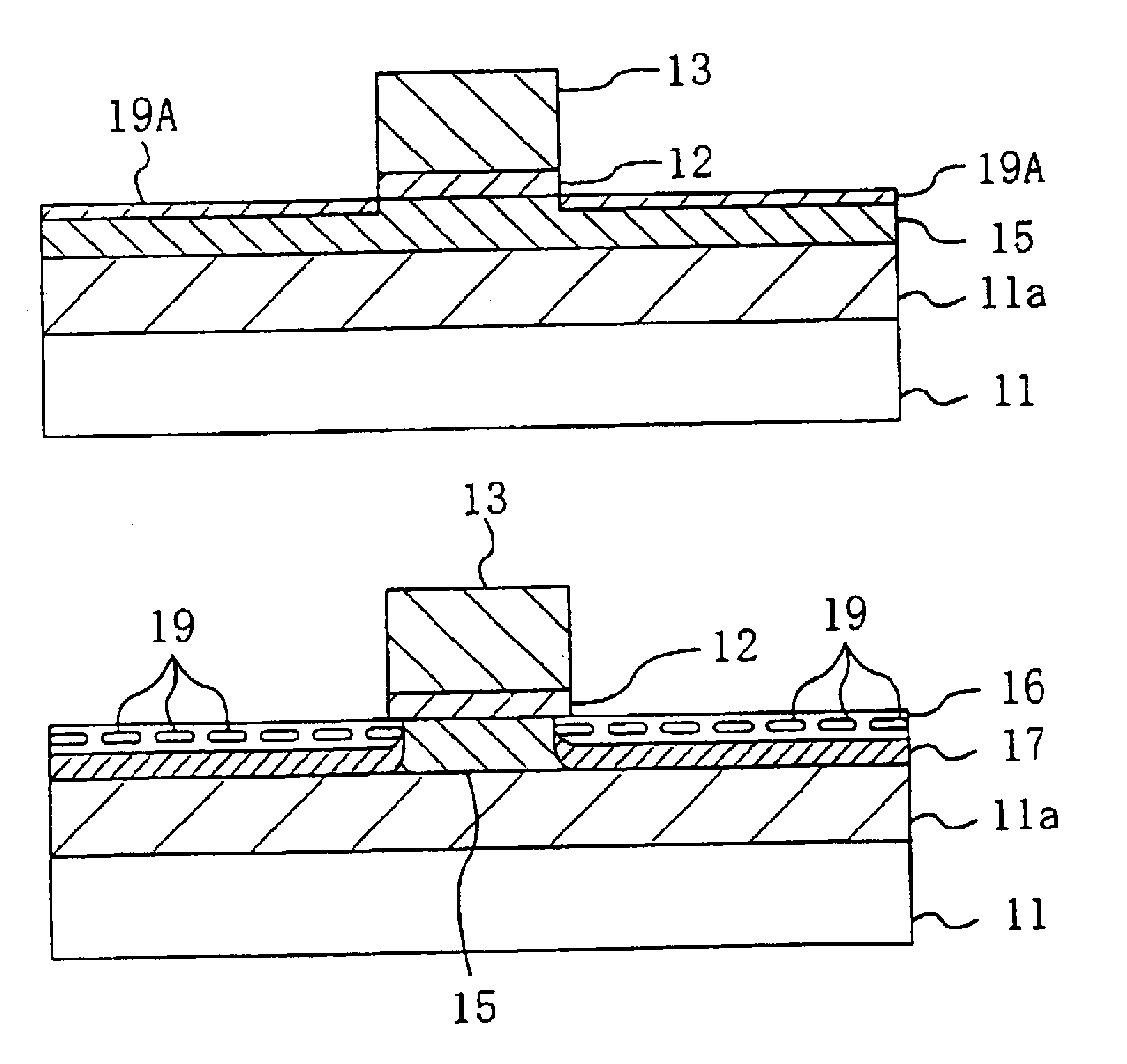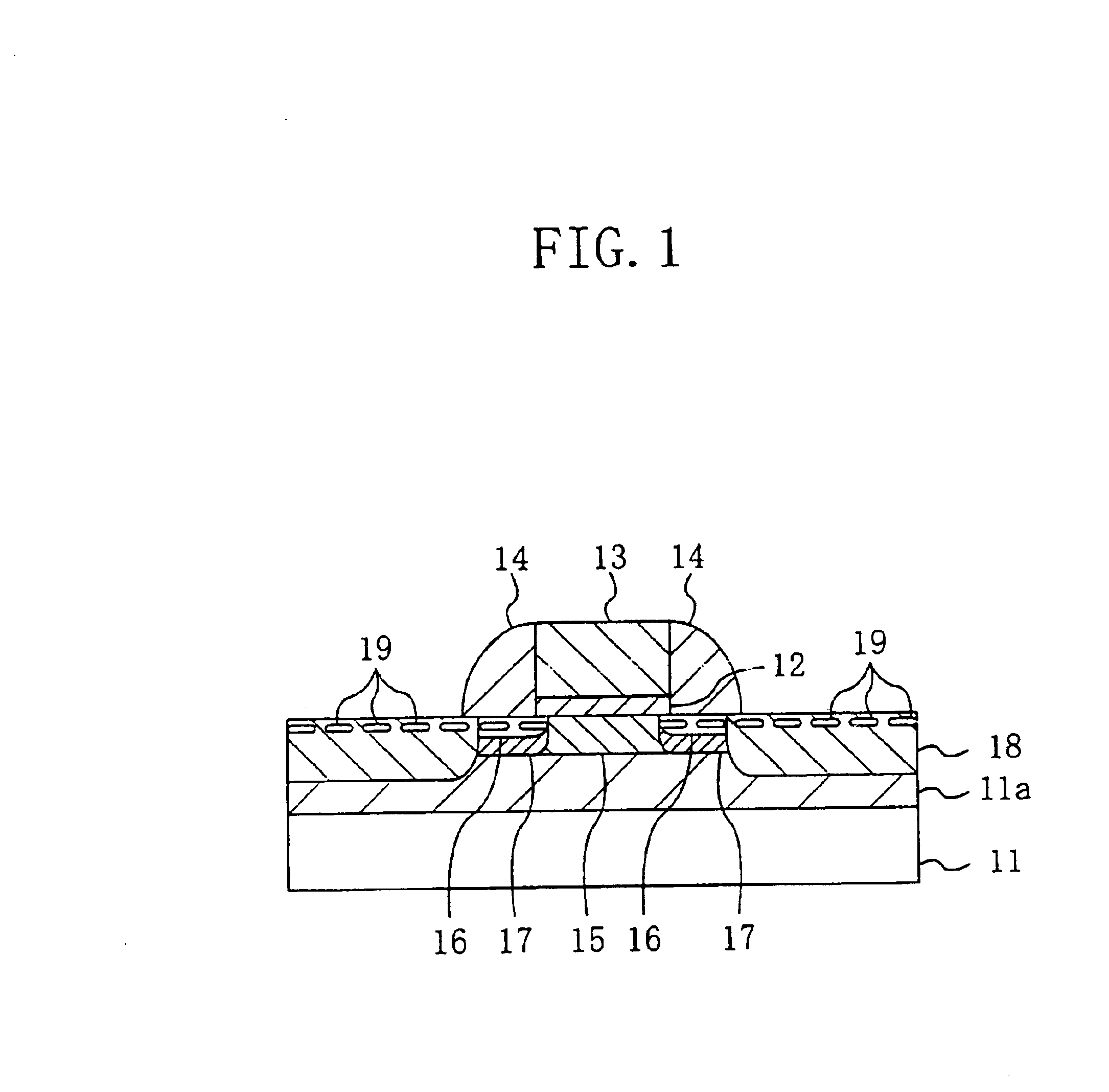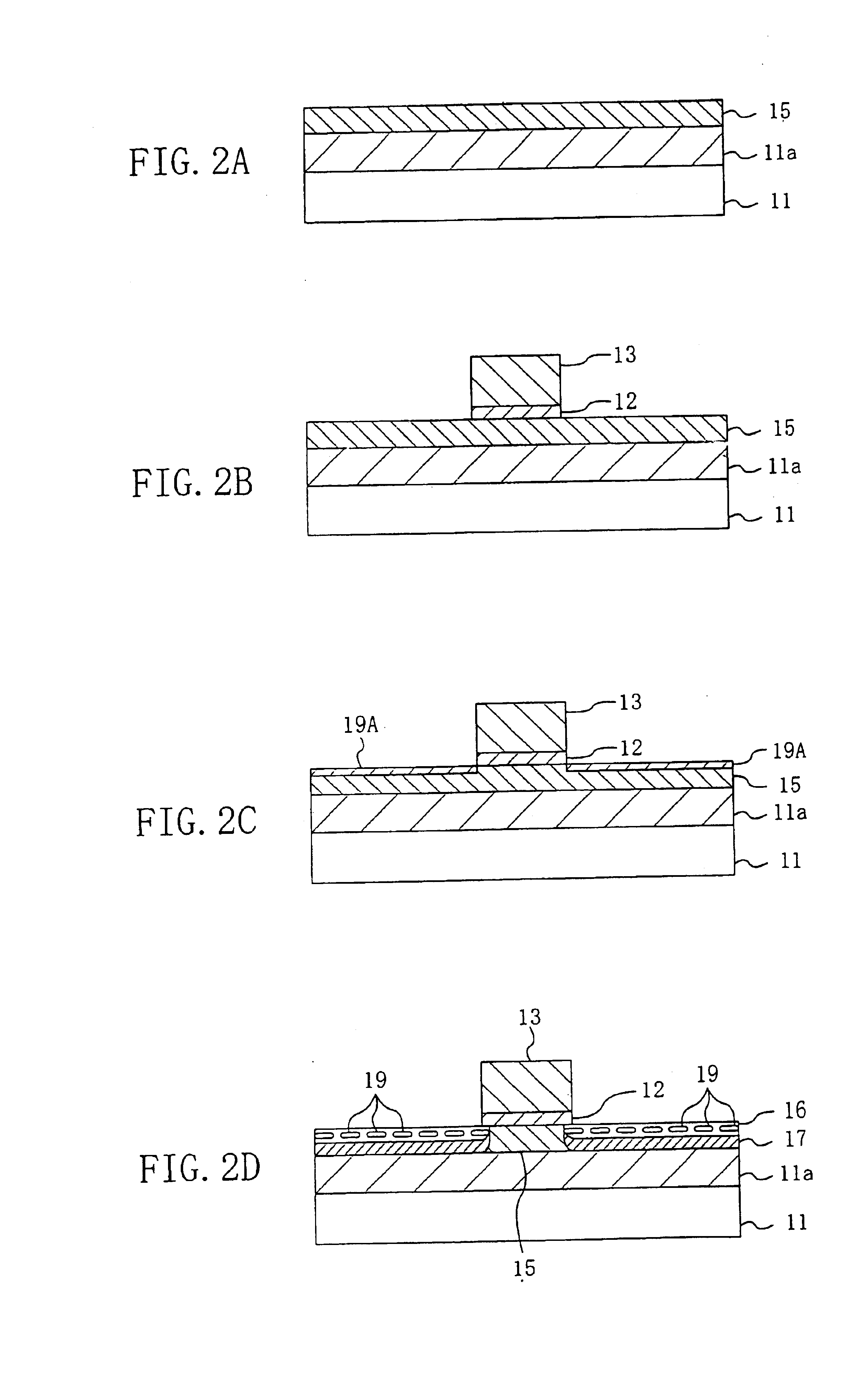Semiconductor device and method for manufacturing the same
a technology of semiconductors and semiconductors, applied in the direction of semiconductor devices, electrical equipment, transistors, etc., can solve the problems of increased dose loss, achieve the effect of reliably improving the activation ratio of p-type impurity ions, reliably preventing the dose loss phenomenon, and suppressing the production of bics
- Summary
- Abstract
- Description
- Claims
- Application Information
AI Technical Summary
Benefits of technology
Problems solved by technology
Method used
Image
Examples
first embodiment
A first embodiment of the present invention will be described with reference to the drawings.
FIG. 1 is a cross-sectional view illustrating an MIS transistor according to the first embodiment of the present invention.
As illustrated in FIG. 1, an N-type well 11a is formed in an upper portion of a semiconductor substrate 11 made of P-type silicon, for example. Note that while the transistor of the present embodiment is formed in and on the N-type well 11a, the N-type well 11a may alternatively an N-type semiconductor layer provided in a substrate having an SOI structure, or an N-type semiconductor substrate may alternatively be used.
A gate electrode 13 made of poly-metal or polysilicon is selectively formed on the N-type well 11a via a gate insulative film 12 made of silicon oxide, or the like. A side wall 14 made of silicon nitride or silicon oxide is formed on a side surface of the gate electrode 13.
An N-type channel diffusion layer 15 is formed in a region of the N-type well 11a bel...
second embodiment
A second embodiment of the present invention will now be described with reference to the drawings.
FIG. 6A to FIG. 6D and FIG. 7A to FIG. 7C are cross-sectional views sequentially illustrating steps in a method for manufacturing an MIS transistor according to the second embodiment of the present invention.
First, referring to FIG. 6A, the semiconductor substrate 11 made of P-type silicon is subjected to ion implantation at an implantation energy of about 140 keV and a dose of about 1×1012 / cm2 by using N-type impurity ion, e.g., arsenic ion. Then, using N-type impurity ion, e.g., phosphorus ion, ion implantation at an implantation energy of about 260 keV and a dose of about 4×1012 / cm2 is performed, and further ion implantation at an implantation energy of about 540 keV and a dose of about 1×1013 / cm2 is performed. Following the ion implantation, rapid thermal annealing is performed, in which the intermediate product is heated to a high temperature of about 900° C. to about 1025° C. at a...
third embodiment
A third embodiment of the present invention will now be described with reference to the drawings.
FIG. 8A to FIG. 8D, FIG. 9A and FIG. 9B are cross-sectional views sequentially illustrating steps in a method for manufacturing an MIS transistor according to the third embodiment of the present invention.
First, referring to FIG. 8A, the semiconductor substrate 11 made of P-type silicon is subjected to ion implantation at an implantation energy of about 140 keV and a dose of about 1×1012 / cm2 by using N-type impurity ion, e.g., arsenic (As) ion. Then, using N-type impurity ion, e.g., phosphorus (P) ion, ion implantation at an implantation energy of about 260 keV and a dose of about 4×1012 / cm2 is performed, and further ion implantation at an implantation energy of about 540 keV and a dose of about 1×1013 / cm2 is performed. Following the ion implantation, rapid thermal annealing is performed, in which the intermediate product is heated to a high temperature of about 900° C. to about 1025° C....
PUM
 Login to View More
Login to View More Abstract
Description
Claims
Application Information
 Login to View More
Login to View More - R&D
- Intellectual Property
- Life Sciences
- Materials
- Tech Scout
- Unparalleled Data Quality
- Higher Quality Content
- 60% Fewer Hallucinations
Browse by: Latest US Patents, China's latest patents, Technical Efficacy Thesaurus, Application Domain, Technology Topic, Popular Technical Reports.
© 2025 PatSnap. All rights reserved.Legal|Privacy policy|Modern Slavery Act Transparency Statement|Sitemap|About US| Contact US: help@patsnap.com



